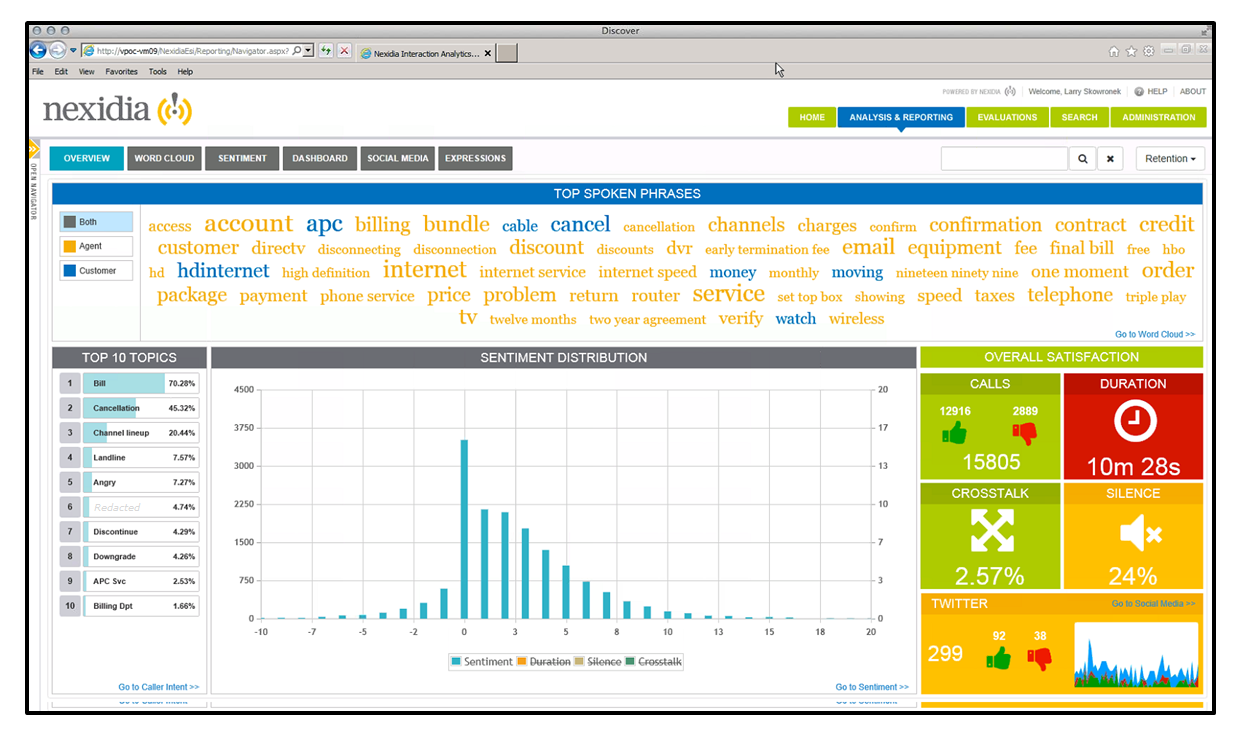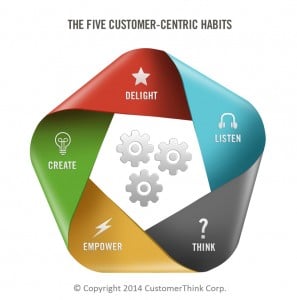Listening to the Voice of Customer (VoC) is incredibly important to any customer-centric business. To Listen effectively is one of the five habits of customer-centric firms, as discussed in my new book Hooked On Customers.
Customer feedback can help you identify problems that need fixing, along with opportunities for new products and services. Regardless of whether you act on a request, listening also fosters customer loyalty because it says “we care enough to ask for your feedback.”
Just what is the “voice” is a key issue. There isn’t just one. For the past several years I’ve been advocating that companies create a VoC Command Center to integrate different forms of feedback.
- Structured feedback: Surveys, web experience data and churn signals are mostly data that can be easily processed with conventional information systems.
- Unstructured feedback: In their raw form, text, speech and social media need help from analytic tools to become actionable information.
One of those key VoC sources is the actual voice of customers. Customer calls to a contact center are usually recorded, providing a rich source of feedback — provided the enterprise invests in speech analytics solutions to make sense of the audio.
Speech analytics solutions have entered the mainstream the past few years, helped along by Moore’s Law, improved ease of use and the rise of Customer Experience Management. Like most enterprise solutions, you can find speech analytics as part of a multi-function suite from companies like Genesys, NICE and Verint.
But there are also “best-of-breed” solutions from specialty firms which tend to push the envelope on innovation and performance — one of those being Nexidia which recently briefed me on Nexidia Interaction Analytics 11.0.
To appreciate Nexidia’s solution it helps to understand what’s “under the hood.” According to Ryan Pellet, Nexidia’s Chief Strategy Officer, the speech analytics industry has split into two camps:
- Phonetic indexing (Nexidia’s approach) which breaks down audio into phonemes for analysis
- Speech to text, which uses a text analytics on text after converting from audio
Why is this important? Pellet says it boils down to performance and scalability. Converting audio to text and then doing the analysis requires more computing power and storage than a phonetic-based approach, which uses the native sounds. Companies that have a massive amount of audio recordings to analyze may find Nexidia’s approach more cost effective.
For example, one Nexidia communications industry client wanted to analyze 70-100K hours of conversations per day. For 13 months. Do the math, and that’s an enormous amount of audio to process. In other cases, for compliance reasons it’s not acceptable to use only a sample of audio (one way to reduce the workload).
In addition to the efficiency inherent in phoneme-based processing, Nexidia offers a “search grid” — essentially a form of grid computing that allows the speech processing to be distributed easily across as many nodes as needed.
Nexidia has also been working on improving ease of use for business users. Here’s an example of a dashboard that a business user can use to explore recordings, set alerts and much more.

While not taking sides on the best-of-breed vs. multi-function suite debate (there’s a case to be made for both), I was impressed with what Nexidia showed me. For large/complex speech analytics applications, it’s definitely worth a look.
Further reading:
- The Next-Generation Voice of Customer Command Center: Tool Time for Chief Customer Officers
- Use Speech Analytics to Reduce Calls That Frustrate Customers and Hurt Productivity
- Speech Analytics: Mining Business Insight from Customer Voices
Disclosure: This post is part of my independent coverage of industry trends and is not meant as an endorsement of Nexidia or any other company mentioned. Nexidia has not been a CustomerThink sponsor within the past year.





As reflected in your post, one of the most useful text and speech evaluation techniques available is sentiment analysis, also known as opinion mining. This tool uses natural language processing and computational linguistics – pretty advanced stuff – to identify attitudes and emotions underlying the text or speech content.. The ‘product’ delivered by vendors is becoming more sophisticated and actionable all the time.
In qualitative research, one of the best techniques we’ve found for text and sentiment analysis is online bulletin boards (OBBs), where a moderator (with focus group skills) leads a group of up to 20-30 online participants through a series of questions and tasks relating to a client’s detailed project objectives.